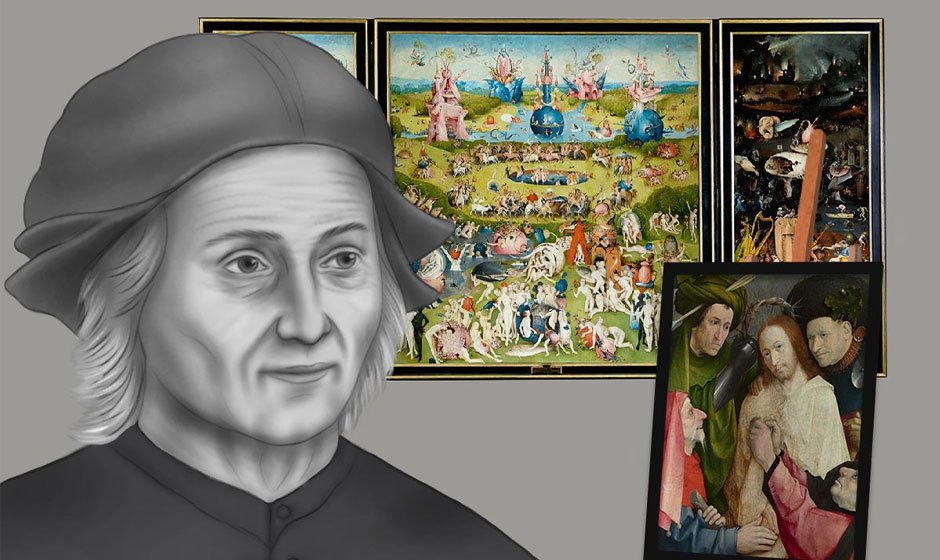Hieronymus Bosch, the enigmatic Early Netherlandish painter, has left an indelible mark on the world of art. His fantastical and often macabre visions have fascinated and puzzled viewers for over five centuries. Bosch’s legacy is not only preserved in the canon of art history but also permeates contemporary popular culture, inspiring artists, filmmakers, writers, and even video game designers. This article explores how Bosch’s work has been received through the centuries and its ongoing influence today.
Reception Over the Centuries
Bosch’s contemporaries and immediate successors were both captivated and bewildered by his work. Unlike many artists of his time, Bosch did not leave behind extensive records or writings, making his intentions and symbolism the subject of much speculation. His works, rich with bizarre creatures, moral lessons, and intricate detail, were both celebrated and misunderstood.
During the 16th and 17th centuries, Bosch’s reputation grew, and his works were collected by the elite across Europe. His paintings, especially “The Garden of Earthly Delights,” became subjects of fascination and study. However, as the Renaissance gave way to the Baroque, the intricacies of Bosch’s symbolism began to be seen as eccentricities rather than profound statements.
It wasn’t until the 20th century that Hieronymus Bosch experienced a renaissance of his own. Art historians began to re-evaluate his works, uncovering layers of meaning that had been overlooked. His unique blend of the grotesque and the sublime began to be appreciated in new ways, positioning Bosch as a forerunner of surrealism and modern fantastical art.
Influence on Modern Art
In the 20th century, artists such as Salvador Dalí and Max Ernst drew direct inspiration from Bosch’s vivid imagination and dreamlike landscapes. The Surrealist movement, with its focus on the unconscious and the bizarre, found a kindred spirit in Bosch. Dalí, in particular, admired Bosch’s ability to blend reality with the fantastical, a hallmark of his own work.
Bosch’s influence is also evident in contemporary art. Artists like Raqib Shaw and Nicola Verlato create works that echo Bosch’s intricate detail and otherworldly visions. The chaotic, densely populated scenes that characterize much of Hieronymus Bosch’s oeuvre find new expressions in modern canvases, ensuring his legacy endures.
Impact on Film and Literature
Bosch’s visual narratives have also seeped into film and literature. Directors like Guillermo del Toro have cited Bosch as an influence, with del Toro’s films often reflecting the dark, fantastical elements found in Bosch’s paintings. Movies like “Pan’s Labyrinth” and “Crimson Peak” incorporate Boschian themes of moral ambiguity, grotesque creatures, and otherworldly realms.
In literature, Bosch’s influence can be seen in the works of writers such as Umberto Eco and Salman Rushdie. Eco’s novel “The Name of the Rose” and Rushdie’s “The Satanic Verses” incorporate dense symbolism and themes of religious and moral complexity that echo Bosch’s paintings.
Bosch in Popular Culture
Hieronymus Bosch’s impact extends beyond traditional art forms into the realms of popular culture. His imagery has inspired album covers, including those of rock bands like Deep Purple and Pearl Jam. The chaotic, nightmarish scenes typical of Bosch’s work resonate with the aesthetic of heavy metal and progressive rock, providing a visual shorthand for the themes of chaos and existential dread explored in these genres.
In the world of video games, Bosch’s influence is unmistakable. Games like “Dante’s Inferno” and “Dark Souls” incorporate Boschian landscapes and creatures, using his vivid, hellish imagery to create immersive and unsettling environments. These digital realms draw on the same blend of fascination and horror that makes Bosch’s paintings so compelling.
Contemporary Interpretations
In recent years, Hieronymus Bosch has been the subject of exhibitions and scholarly studies that continue to unpack his complex symbolism and thematic concerns. The Bosch Research and Conservation Project, for example, has provided new insights into his techniques and materials, enhancing our understanding of his creative process.
Contemporary artists and scholars alike are drawn to Bosch’s ability to convey profound moral and philosophical ideas through intricate, often whimsical imagery. His works, such as “The Temptation of St. Anthony” and “The Last Judgment,” are not just paintings but visual texts that invite endless interpretation and exploration.
Conclusion
Hieronymus Bosch’s legacy is a testament to the enduring power of his imagination and artistic skill. His work has transcended time, influencing a wide array of artistic disciplines and popular culture. From the early reception of his contemporaries to the modern reinterpretations in art, film, and literature, Bosch’s vision continues to captivate and inspire. As we look to the future, it is clear that Hieronymus Bosch will remain a pivotal figure in the arts, his legacy a bridge between the medieval and the modern, the real and the fantastical.
By examining the breadth of Bosch’s influence, we can better appreciate the ways in which his unique vision has shaped and continues to shape our cultural landscape. For anyone interested in the intersections of art, history, and contemporary culture, the works of Hieronymus Bosch offer a rich and endlessly fascinating field of study.











